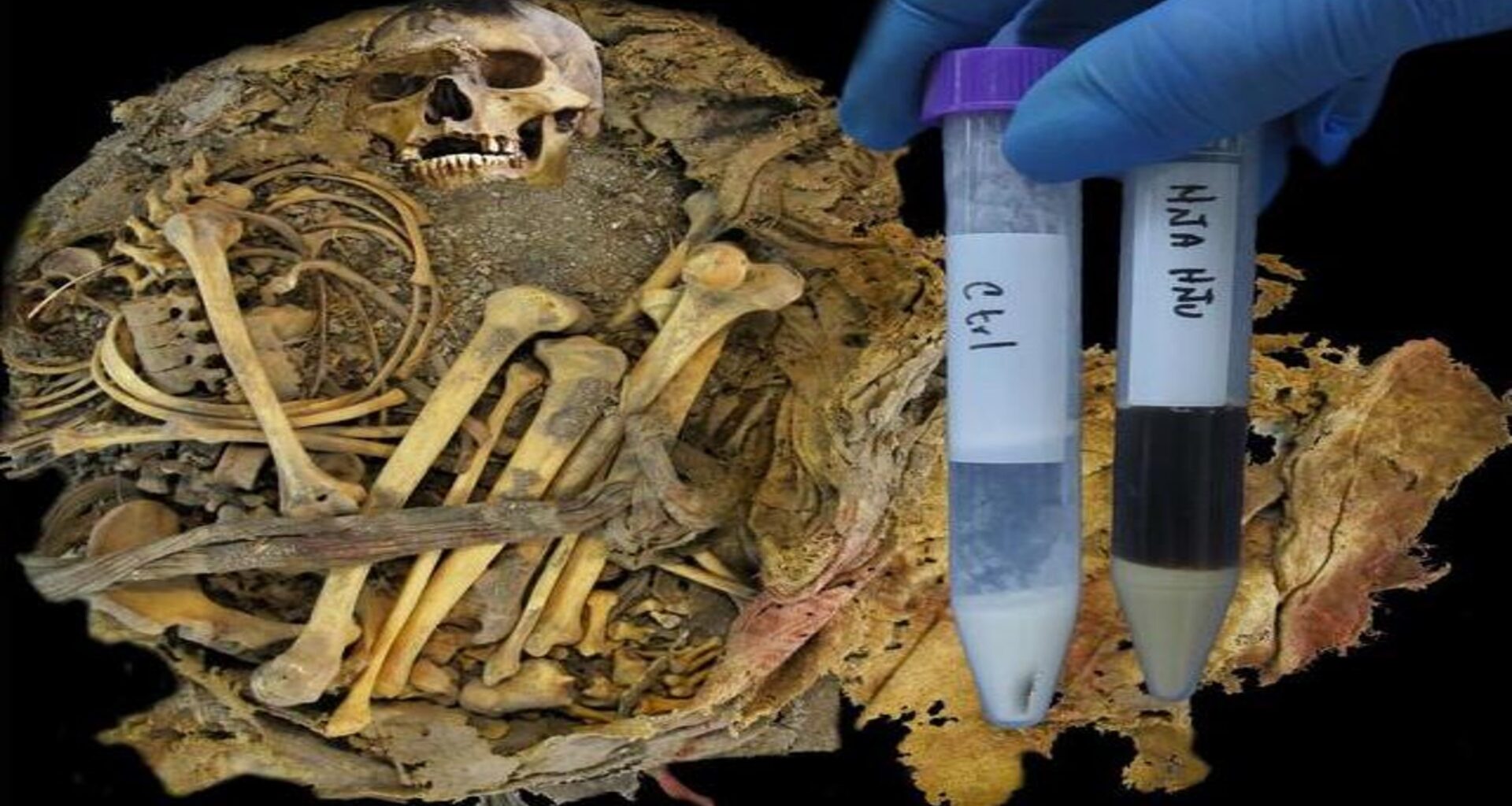Remarkably well-preserved remains of a 1,000-year-old individual from a cave in central Mexico provided researchers with an unprecedented glimpse into the ancient human gut microbiome.
Now called the “Zimapán man,” his body was naturally mummified by the cave’s condition in Zimapán, a region at the edge of Mesoamerica and Aridoamerica.
Also wrapped in an elaborate funerary bundle, he most likely held a prominent place in the Otopame culture, one of the extinct hunter-gatherer groups, as per a press release.
His intestinal tissue and preserved feces revealed a stunning portrait of his microbiome, including the types of bacteria present, which proved to be surprising and notable.
The results of the study, published in PLOS One, “expand knowledge of ancient microbiomes and could provide clues to the man’s life,” according to the press release, and highlight a sophisticated ancient culture worthy of global attention.
A seriously old gut
As study authors stated, recent years have shown significant progress in the study of ancient samples through the analysis of DNA and other molecules, to explore the evolutionary history of living organisms.
In 2014, they continued, residents of El Saucillo, Zimapán, Hidalgo discovered the mortuary bundle in a rock shelter that naturally possessed the conditions to preserve the body.
“…Remnants of soft tissue, including skin, fragments of the intestinal wall, fecal remains, and blood vessels, were also found.”
Researchers, led by Santiago Rosas-Plaza of the National Autonomous University of Mexico, use standard methods to analyze the remains.
An ancient gut, with modern bacteria
They identified the individual they named Hna Hnu as a male who died between the ages of 21 and 35. He was laid to rest in layers of maguey fiber mats and woven cotton, according to Archaeology Mag, suggesting he held a prominent place in society.
“The outer layer of the bundle was made of a mat, that is, long fibers, apparently maguey, intertwined to form a strong yet malleable rectangle. Beneath this mat, and on top of which Zimapán man was placed, was a perfectly woven sheet of native brown cotton.”
They applied 16S rRNA gene sequencing to his mummified intestinal tissue and preserved feces to determine which types of bacteria were living inside his body.
The press release further states that they identified several families of bacteria, known to exist in the human microbiome, including Peptostreptococcaceae, Enterobacteriaceae, and Enterococcaceae, indicating that these have a long-standing symbiotic relationship with humans.
Signs of bacteria from the Clostridiaceae family had previously been found in other mummies from ancient Andean civilizations, linking the individual to a larger cultural context.
Finally, Romboutsia hominis had never presented itself in ancient microbiomes until now, a new appearance, which makes it a landmark result in microbial evolution research,” according to Archaeology Mag.
An ancient link to human diet and bacteria
As study authors concluded, “The integration of anthropological, archaeological, and microbiome data is a powerful tool for unraveling human evolution and its intricate relationship with both biological and social environments.”
“This finding raises the possibility that the Zimapán paleofeces could preserve authentic ancient gut bacteria.”
Interestingly, as a final note, his state of preservation speaks to the culture’s intelligent means of preserving the body. Notably, the study authors concluded in the press release that they studied “the mathematical composition of the knots within the fabric.”
“It was a peculiar and complex arrangement to carry out. For almost eight years now, Master Luisa Mainauo, who safeguards the mortuary bundle, has been working with her team to restore the savannah and soon be able to show it not only to the people of Mexico but to the entire world.”
Read the study in PLOS One.
